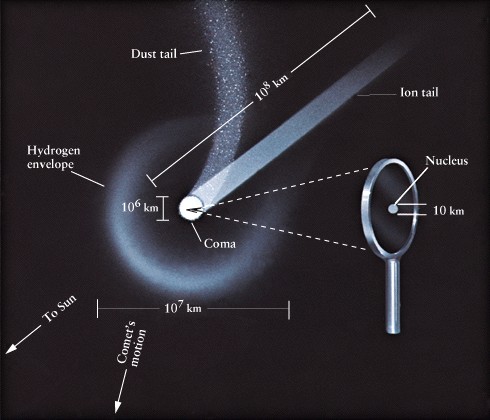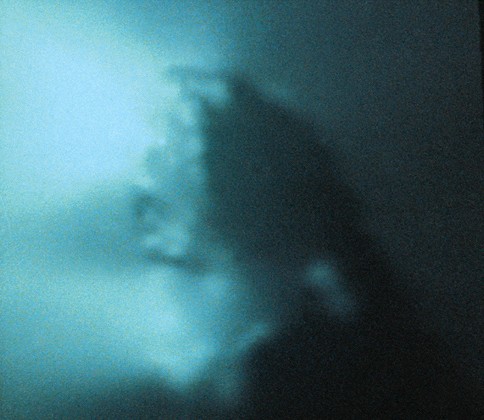 Back Back |
Next
|
Structure
of a Comet/Comet tail
-
Before
it starts vaporizing, the comet is just a dirty snowball
-
snowball
part becomes nucleus
-
Water
vapor expanding off of nucleus that has not broken into H and O yet forms
coma
-
The
coma is generally what we think of as the "head" of the comet
-
Hard
to see nucleus through coma
-
Generally
see jets of water vapor coming off of nucleus
-
"Dirt"
part of comet flys off with water, becomes dust tail
-
dust
is reflective, light actually pushes on it!
-
radiation
pressure
-
Sunlight
that breaks up H2O also ionizes H2O and other elements
found in comet (e.g. CO)
-
ions
get swept back by solar wind
-
Solar
wind much more effective at pushing ions than radiation pressure is at
pushing dust
-
Two
tails
-
Ion
tail (straight back)
-
Dust
tail (curved)
-
a 3rd
tail was discovered in Hale-Bopp due to a special interaction of sodium
and sunlight, sticks even straighter back than ion tail
-
Production
of water, ions, etc. can vary from day to day, changes affect ion tail
more (moving faster)
-
Comet
tails always point away from the Sun (at least as viewed from above

Nucleus
of Comet Halley from Giotto spacecraft

Two
tails of comet Mrkos (1957, two day intervals)


 Back Back |
Next
|



